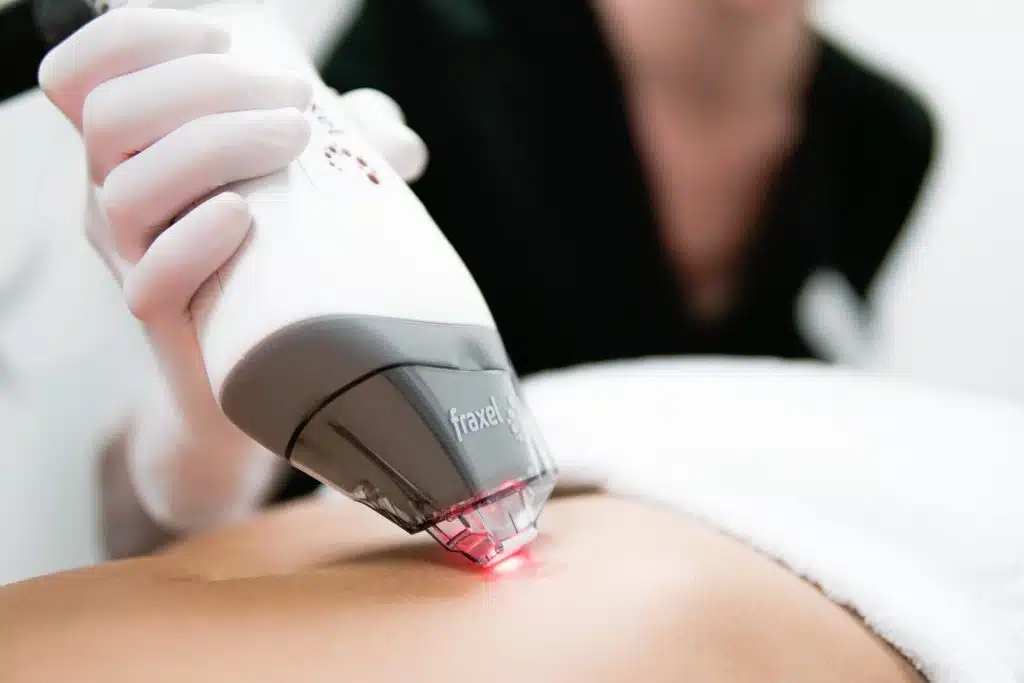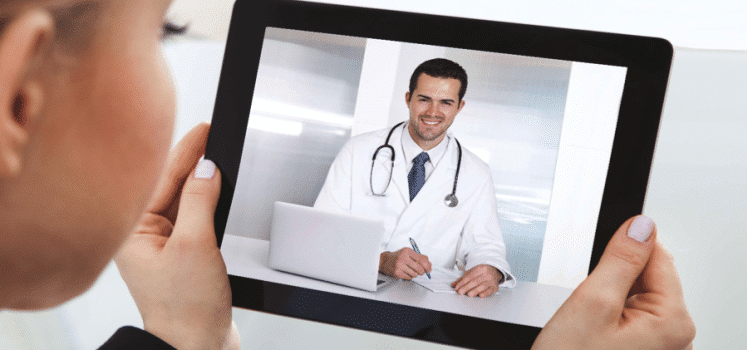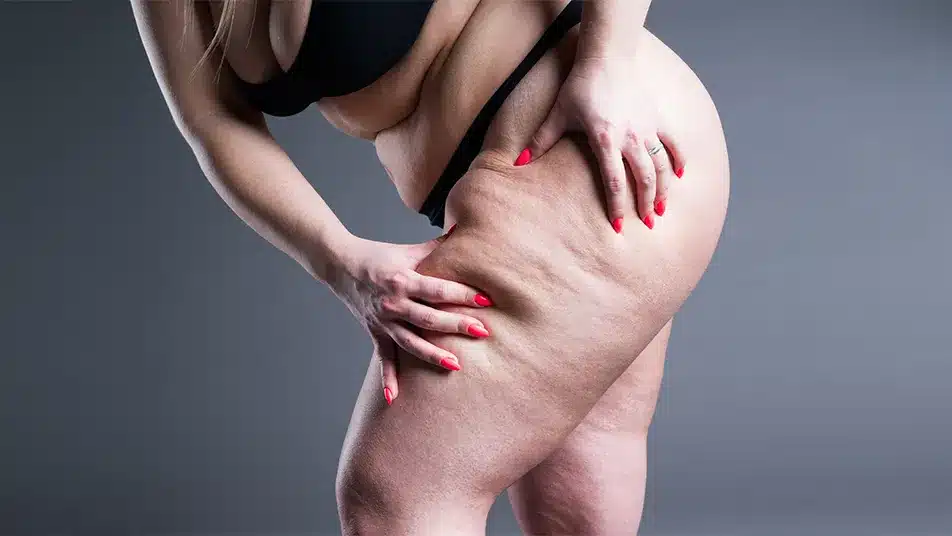Advances in scar reduction techniques have transformed how we tackle scars. Gone are the days of limited options and unsatisfactory results in scar improvement, surgical scars, scar removal, and operative scars. Today, innovative methods like laser therapy and microneedling offer effective solutions for various skin types. These techniques not only minimize the appearance of scars but also promote healthier skin regeneration.
Patients now experience faster recovery times and less discomfort, along with effective scar prevention therapies and scar revision techniques, compared to traditional methods. With a focus on personalized treatment plans, individuals can achieve smoother skin tailored to their unique needs. The evolution in these techniques marks a significant shift in dermatology, providing hope and confidence to those seeking improvement.
Key Takeaways
- Understanding how scars form is crucial for choosing the right treatment; educate yourself on scar formation to make informed decisions.
- Different types of scars require different approaches; identify your scar type to select the most effective treatment option.
- For keloid and hypertrophic scars, consider specialized treatments like corticosteroid injections or silicone gel sheets for better outcomes.
- Explore emerging scar treatments such as innovative laser techniques and cryotherapy methods, which offer promising results for reducing scar visibility.
- Topical treatments and intralesional therapies can be effective; consult with a dermatologist to find the best products for your skin type.
- Mechanical and pressure therapies can help manage scars, especially after surgery; incorporating these methods may enhance your overall scar reduction strategy.
Understanding Scar Formation
Biological Process
Scars form as part of the body’s healing process. When skin gets injured, the body reacts quickly. It begins to repair the damaged tissue. This repair involves a complex biological process. Collagen production plays a crucial role in this process. Collagen is a protein that provides structure to the skin, aiding in scar prevention therapies and the healing of traumatic scars through scar revision techniques. Fibroblasts, a type of cell, produce collagen during healing.
Initially, the body forms a clot to stop bleeding. Afterward, new tissue starts to grow beneath the wound. This new tissue is often thicker and less flexible than normal skin. Over time, this tissue matures and can change in appearance and texture, including traumatic scars that may require a scar revision technique.
Factors Influencing Scar Development
Various factors influence cutaneous scar development. Genetics play a significant role. Some people are more prone to developing thick scars due to their genetic makeup. Skin type also matters; oily or dry skin can affect how well wounds heal, leading to a traumatic scar.
Wound care practices impact scar quality too. Proper cleaning and dressing of wounds can lead to better healing outcomes and reduce the risk of traumatic scar formation. In contrast, neglecting wound care can result in abnormal scar formation. Age affects scar management practices. Younger skin tends to heal faster but may develop more pronounced scars.
Normal vs Abnormal Scars
Normal scar formation leads to flat and pale marks on the skin. These scars usually fade over time and become less noticeable. They blend with surrounding skin. However, abnormal scar conditions can arise from improper healing.
Keloids are an example of abnormal scar formation. They occur when there is excessive collagen production during healing, resulting in a traumatic scar. Keloids extend beyond the original wound site and can be itchy or painful. Hypertrophic scars are another type; they remain within the boundaries of the wound but are raised and red.
Understanding these differences is vital for effective scar management. Treatments vary based on the type of scar and individual needs. For instance, silicone gel sheets can help flatten hypertrophic scars, while corticosteroid injections may reduce keloid size.
In summary, recognizing the biological processes behind scar development helps in choosing appropriate treatments. Knowledge about factors affecting scar formation allows individuals to take proactive steps in their wound care practices.
Types of Scars
Keloid Scars
Keloid scars form when the body produces too much collagen during healing. These scars are raised and can extend beyond the original wound site. They often appear shiny and firm. Keloids can develop after surgeries, injuries, or even acne. Genetics plays a significant role in their formation. People with darker skin tones are at a higher risk for keloid formation.
Hypertrophic Scars
Hypertrophic scars are similar to keloids but differ in appearance and behavior. They are also raised but remain within the boundaries of the original injury. These scars may become red or dark and usually flatten over time. Common causes include burns, surgical wounds, and trauma. Unlike keloids, hypertrophic scars are less likely to recur after treatment.
Atrophic Scars
Atrophic scars result from a loss of tissue. They appear as depressions or indentations on the skin’s surface. Acne scars are a common example of atrophic scars. Other causes include chickenpox, surgery, or injuries that heal poorly. The skin lacks sufficient collagen in these areas, leading to their sunken appearance.
Contracture Scars
Contracture scars occur when the skin tightens due to severe burns or large wounds. These scars can limit movement depending on their location. They often pull the surrounding skin inward, which can affect functionality. Contractures are common after extensive burns that damage deeper layers of skin. Treatment may require surgical intervention to restore mobility.
Keloid and Hypertrophic Scars
Growth Patterns
Keloid scars and hypertrophic scars differ in their growth patterns. Keloids extend beyond the original wound site. They can grow larger over time, often becoming raised and firm. The edges of keloids are irregular and can appear shiny.
Hypertrophic scars, on the other hand, stay within the boundaries of the original injury. These scars also rise above the skin but do not grow larger than the wound itself. Their texture is often smooth, and they may fade over time.
Treatment Options
Different treatment options exist for both keloid and hypertrophic scars. Steroid injections are common for managing these types of scars. They help reduce inflammation and flatten the scar tissue. For keloids, multiple sessions may be necessary to achieve desired results.
Surgery is another option, particularly for keloids. Surgeons can remove the excess scar tissue. However, surgery carries a risk of recurrence. After removal, doctors often recommend additional treatments like steroid injections or silicone sheets to prevent regrowth.
For hypertrophic scars, treatments include silicone gel sheets or pressure therapy. These methods help soften and flatten the scar over time. Laser therapy can also improve the appearance of both keloid and hypertrophic scars.
Recurrence Potential
Recurrence is a significant concern with keloid scars. After treatment, many patients experience regrowth at the same site. Studies show that up to 50% of keloids return after surgical removal. This risk makes long-term management crucial.
In contrast, hypertrophic scars have a lower recurrence rate. Most respond well to treatments without significant regrowth. However, ongoing care is still important to maintain improvements.
Long-term management strategies include regular follow-ups with healthcare providers. Patients should monitor their scars for changes in size or color. Early intervention can help address any issues before they worsen.
Patients often benefit from education about their scars. Understanding how to care for them can lead to better outcomes. Support groups can provide emotional support as well.
Contracture Scar Solutions
Surgical Options
Surgical interventions play a key role in treating contractures. Skin grafts are commonly used to cover areas where the skin has been lost. This technique involves taking healthy skin from another part of the body and attaching it to the affected area.
Flaps are another surgical option. Flaps involve moving tissue from one part of the body to another while keeping its blood supply intact. This method helps restore function and appearance more effectively than grafts in some cases. These procedures can significantly improve mobility and reduce the severity of contractures.
Non-Surgical Methods
Non-surgical methods also contribute to scar reduction. Physical therapy is essential for improving mobility in patients with contractures. Therapists use targeted exercises to stretch and strengthen muscles around the scarred area.
Splinting is another effective non-surgical approach. It involves using devices that hold joints in a specific position to prevent or correct contractures. Regular use of splints can help maintain range of motion and prevent further tightening of the skin.
Importance of Early Intervention
Early intervention is crucial in managing contractures. Delaying treatment can lead to functional limitations that impact daily life. When treatment begins promptly, patients experience better outcomes.
For instance, children with burn injuries often develop contractures if not treated early. Immediate action can reduce the risk of permanent damage and improve their quality of life. Parents should be aware of signs indicating the need for intervention, such as difficulty moving a joint or noticeable tightness in the skin.
Summary
In summary, both surgical and non-surgical techniques are vital for treating contracture scars. Skin grafts and flaps offer effective surgical solutions, while physical therapy and splinting provide necessary support without surgery. The emphasis on early intervention cannot be overstated, as it plays a significant role in preventing long-term complications.
Emerging Scar Treatments
Novel Therapies
Research has introduced promising therapies for traumatic scars treatment. Stem cell therapy shows potential in regenerating skin and reducing scar formation. Studies indicate that stem cells can enhance wound healing by promoting tissue repair. Gene editing is another innovative approach under investigation. This technique aims to modify genes responsible for scar tissue development. By targeting these genes, researchers hope to minimize scarring effectively.
Drug Delivery Systems
Advancements in drug delivery systems have transformed scar treatment modalities. New technologies allow targeted delivery of medications directly to scar tissue. This method increases the effectiveness of treatments while minimizing side effects. For instance, microneedle patches can deliver drugs deep into the skin. These patches provide a less invasive option compared to traditional injections.
Biotechnology’s Role
Biotechnology plays a crucial role in developing personalized scar management modalities. Tailored treatments based on individual patient profiles are becoming more common. Genetic testing helps identify the most effective therapies for each person. Such advancements ensure that patients receive the best possible care for their unique scar types.
Surgical Techniques
Surgical scar revision remains a vital option for severe scarring. Techniques like scar excision help remove unwanted tissue and improve appearance. Surgeons often combine this with other methods, such as laser therapy, to enhance results. scar revision techniques are evolving with technology, making procedures safer and more effective.
Preventive Approaches
Preventing scars before they form is gaining attention in the medical community. Scar prevention therapies focus on managing wounds properly during healing. Keeping wounds clean and moisturized can significantly reduce scar formation. Moreover, silicone gel sheets or pressure garments may be recommended after surgery to minimize scarring.
Research Developments
Ongoing research continues to uncover new insights into scar therapy. Clinical trials are essential for testing the effectiveness of emerging treatments. For example, studies on topical agents show promise in enhancing scar healing. Researchers also explore the impact of various compounds on collagen production, which is key in scar formation.
Emotional Impact
Scars can have emotional consequences for individuals, affecting self-esteem and body image. Understanding this helps healthcare providers offer comprehensive care that includes psychological support alongside physical treatments.
Innovative Laser Techniques
Fractional Lasers
Fractional lasers are a key advancement in scar reduction. These lasers target small areas of skin. They create tiny wounds, which stimulate the body’s healing response. This process remodels scar tissue and improves skin texture. Research shows that fractional laser therapy can significantly reduce scar visibility. Many patients notice smoother skin after treatment.
In 2008, a study published in the Journal of Cosmetic Dermatology highlighted these benefits. The results showed marked improvement in scar appearance over time. Patients often report higher satisfaction levels with their skin’s look and feel following treatment.

Reducing Pigmentation
Laser therapy effectively reduces pigmentation in scars. Hyperpigmentation often occurs after injury or surgery. Lasers work by targeting pigmented cells. This process breaks down excess melanin, leading to a more even skin tone.
A notable example is the use of Q-switched lasers. These lasers have shown success in treating pigmented scars since the early 1990s. Studies indicate that these treatments can lighten dark spots significantly. Many patients see improvements within just a few sessions.
Combining Modalities
Combining laser treatments with other techniques enhances results. For instance, using laser therapy alongside surgical revision can improve overall outcomes. Surgeons often recommend this approach for raised scars at donor sites.
In 2015, research published in Dermatologic Surgery confirmed these findings. The study revealed that combining laser therapy with microneedling led to better scar appearance than either method alone. This combination promotes deeper healing and collagen production.
Patients benefit from tailored treatment plans that address their unique needs. Customizing procedures ensures optimal results and faster recovery times.
Cryotherapy Methods
Freezing Process
Cryotherapy involves applying extreme cold to the skin. This method helps in freezing scar tissue. Liquid nitrogen is commonly used for this purpose. It rapidly cools the targeted area. The freezing process destroys abnormal cells in the scar tissue. As a result, it reduces the size and appearance of scars.
The procedure typically takes only a few minutes. Patients may feel a slight sting during treatment. Afterward, the skin may become red and swollen. This reaction is normal and usually subsides within a few hours.
Keloid Treatment
Cryotherapy is particularly effective for treating keloids. Keloids are raised scars that form due to excessive collagen production. They can be itchy and uncomfortable. Studies show that cryotherapy can significantly reduce their size. In some cases, keloids disappear entirely after multiple treatments.
Patients often need several sessions for optimal results. Each session targets the keloid with cold therapy. Over time, this can flatten the scar and improve its color.
Side Effects
While cryotherapy is generally safe, it can have side effects. Some patients experience pain or discomfort at the treatment site. Others might notice blistering or changes in skin color. These side effects are usually temporary.
Recovery time varies by individual. Most people can return to daily activities right after treatment. However, some may need to avoid sun exposure for a few days. Following post-treatment care instructions is crucial for healing.
Effectiveness Overview
Cryotherapy offers a simple cure for certain types of scars. Its effectiveness depends on the scar’s characteristics and location. Keloids respond well, but other types like hypertrophic scars also benefit from this technique.
Research indicates that combining cryotherapy with other treatments enhances results. For instance, using it alongside laser therapy can improve overall outcomes. Patients should discuss their options with a healthcare provider to determine the best approach.
Topical and Intralesional Treatments
Topical Treatments
Topical treatments are commonly used for scar reduction. These include silicone gels and onion extract creams. Silicone gels create a protective barrier over the scar. This helps to keep the area hydrated and promotes healing. Studies show that silicone can significantly improve scar appearance when applied consistently.
Onion extract creams, such as those containing Allium cepa, have shown promise in reducing scar formation. They may help to soften and flatten scars. Other topical agents include vitamin E and hydrogel dressings. Each of these treatments works best on newer scars rather than older ones.
Intralesional Injections
Intralesional injections deliver medication directly into the scar tissue. This method allows for targeted treatment. Steroid injections are among the most common types used. These injections reduce inflammation and help flatten raised scars. Patients often see improvements after just a few sessions.
The injections can also be combined with other treatments for better results. For example, they might be used alongside cryotherapy methods for enhanced effectiveness. However, this approach requires careful administration by a healthcare professional.
Benefits and Limitations
Both topical and intralesional treatments offer unique benefits and limitations. Topical treatments are non-invasive and easy to apply at home. They are generally safe with minimal side effects. However, they may take longer to show results compared to injections.
Intralesional injections provide quicker results, especially for hypertrophic or keloid scars. They allow for precise delivery of medication to the affected site. Yet, these treatments can be uncomfortable and require multiple visits to a clinic.
Patients should weigh their options carefully. Consulting with a dermatologist will help determine the best approach based on individual needs.
Mechanical and Pressure Therapies
Pressure Garments
Pressure garments are commonly used in scar reduction. These specialized clothing pieces apply consistent pressure to the scar area. They help flatten raised scars, making them less noticeable over time. The garments fit snugly over the affected skin and are designed for comfort and effectiveness.
These garments are often made of elastic materials. They come in various forms, such as sleeves, masks, and wraps. Each type targets specific areas of the body. Patients typically wear these garments for 12 to 24 hours a day, depending on the severity of the scar.
Mechanism of Action
Pressure therapy works by applying constant pressure to the scar tissue. This pressure reduces blood flow to the area, which can decrease collagen production. Collagen is a protein that contributes to scar thickness. Less collagen means thinner scars.
The therapy also aids in remodeling the scar tissue. Over time, this process helps the skin regain its normal appearance. Studies show that patients who undergo pressure therapy experience significant improvements in scar texture and color.
Importance of Adherence
Adherence to pressure therapy is crucial for achieving optimal outcomes. Patients must commit to wearing their garments consistently. Missing even a few hours can slow down progress.
Typically, doctors recommend a therapy duration of six months or longer for best results. Some patients may need to continue for up to a year, especially if they have severe scarring from trauma or surgery.
Regular follow-ups with healthcare providers help monitor progress. Adjustments to the treatment plan may be necessary based on individual needs.
In summary, mechanical and pressure therapies play an important role in scar reduction techniques. These methods provide effective options for managing scars resulting from trauma or surgical procedures. With proper use and adherence, patients can expect noticeable improvements in their scar appearance over time.
Final Remarks
Advancements in scar reduction techniques have transformed how you can manage and minimize scars. Understanding the various types of scars and their treatments empowers you to make informed choices. From innovative laser therapies to cutting-edge topical treatments, options abound for improving your skin’s appearance.
Take action today! Explore these techniques further and consult with a specialist to find the best approach for your unique needs. Your journey to smoother skin starts with knowledge and the right resources at your fingertips. Don’t let scars hold you back—embrace the latest advancements and reclaim your confidence!
Frequently Asked Questions
What causes scars to form?
Scars form as part of the body’s natural healing process after injury. When skin is damaged, collagen fibers rebuild the tissue, often resulting in a scar.
What are the main types of scars?
The main types of scars include atrophic, hypertrophic, keloid, and contracture scars. Each type varies in appearance and treatment options.
How do keloid and hypertrophic scars differ?
Keloid scars extend beyond the original wound area and can be raised. Hypertrophic scars remain within the wound boundaries but are also raised.
What treatments are available for contracture scars?
Contracture scars can be treated with surgical excision, skin grafting, or therapies like silicone gel sheets and pressure garments to improve flexibility.
What are some emerging scar treatments?
Emerging scar treatments include advanced laser therapies, cryotherapy methods, and innovative topical agents that promote healing and reduce scar visibility.
How do innovative laser techniques work for scar reduction?
Innovative laser techniques target scar tissue, promoting collagen remodeling and skin regeneration. They can effectively reduce scar size and improve texture.
Are there effective topical treatments for scars?
Yes, topical treatments like silicone gels, vitamin E creams, and corticosteroid ointments can help flatten and fade scars when used consistently.











